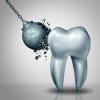
Breaking News
 Is Global Technocracy Inevitable Or Dangerously Delusional?
Is Global Technocracy Inevitable Or Dangerously Delusional?
 Grand Theft World Podcast 261 | THE EPSTEIN EMAIL SHOW with guest Billy Ray Valentine
Grand Theft World Podcast 261 | THE EPSTEIN EMAIL SHOW with guest Billy Ray Valentine
 Mexico's 'Gen Z rebellion' exposed as viral right-wing plot
Mexico's 'Gen Z rebellion' exposed as viral right-wing plot
 Let Neighborhoods Work: Bans on Home Businesses Are Out of Control
Let Neighborhoods Work: Bans on Home Businesses Are Out of Control
Top Tech News
 New Gel Regrows Dental Enamel–Which Humans Cannot Do–and Could Revolutionize Tooth Care
New Gel Regrows Dental Enamel–Which Humans Cannot Do–and Could Revolutionize Tooth Care
 Researchers want to drop lab grown brains into video games
Researchers want to drop lab grown brains into video games
 Scientists achieve breakthrough in Quantum satellite uplink
Scientists achieve breakthrough in Quantum satellite uplink
 Blue Origin New Glenn 2 Next Launch and How Many Launches in 2026 and 2027
Blue Origin New Glenn 2 Next Launch and How Many Launches in 2026 and 2027
 China's thorium reactor aims to fuse power and parity
China's thorium reactor aims to fuse power and parity
 Ancient way to create penicillin, a medicine from ancient era
Ancient way to create penicillin, a medicine from ancient era
 Goodbye, Cavities? Scientists Just Found a Way to Regrow Tooth Enamel
Goodbye, Cavities? Scientists Just Found a Way to Regrow Tooth Enamel
 Scientists Say They've Figured Out How to Transcribe Your Thoughts From an MRI Scan
Scientists Say They've Figured Out How to Transcribe Your Thoughts From an MRI Scan
 Calling Dr. Grok. Can AI Do Better than Your Primary Physician?
Calling Dr. Grok. Can AI Do Better than Your Primary Physician?
Robotic Hand with Bones, Ligaments and Tendons Created for First Time Using 3D Printing

The various polymers can be fine-tuned to replicate the elasticity or rigidity of a human hand, representing a major advancement over existing 3D-printed prosthetics.
While 3D printing technology was previously limited to fast-curing plastics, researchers have now made it suitable for slow-curing plastics as well.
They say these materials have "decisive" advantages as they have enhanced elastic properties and are more durable and robust.
The use of such polymers is made possible by new technology developed by researchers at ETH Zurich in Switzerland and a US startup from Mass. Institute of Technology which can be used to create delicate structures and parts with cavities as desired. InkBit from MIT now offers the technology and prints complex objects on customer request.The technology also makes it easy to combine soft, elastic, and rigid materials.
"We wouldn't have been able to make this hand with the fast-curing polyacrylates we've been using in 3D printing so far," said Thomas Buchner, a doctoral student from ETH Zurich who led the authorship of the paper published on their work.
"We're now using slow-curing thiolene polymers. These have very good elastic properties and return to their original state much faster after bending than polyacrylates," he said, adding this makes them ideal for making complex prosthetics.

 Unbanked In A Connected World
Unbanked In A Connected World

